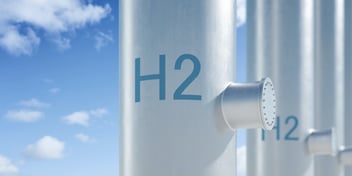New research reveals extent of water theft across the world
Between 30 and 50 per cent of the world’s water supply is embezzled each year, according to an international study led by the University of Adelaide, illustrating the urgent need for better understanding of water theft in both developed and developing countries.
Published in Nature Sustainability, researchers have developed a new model to help identify and understand the drivers behind water theft, as well as ways to deter unlawful water use.
University of Adelaide Centre for Global Food and Resources Senior Lecturer Dr Adam Loch said the phenomenon has not received a lot of coverage due to a lack of data, particularly in developing countries.
“But theft also occurs in the developed world, especially in agricultural settings,” he said.
“According to Interpol, thieves steal as much as 30 to 50 per cent of the world's water supply annually — a big number.
“Compounding this problem is the fact that, as the scarcity of our most precious resource increases due to climate and other challenges, so too do the drivers for water theft.”
According to the paper, reasons for water theft include social attitudes, faulty institutions and uncertainty around future water supply.
Loch said the new framework is designed to help water managers test the impact of changes to detection, prosecution and conviction systems, and measure the effectiveness of penalties to water theft in terms of providing an effective deterrent to theft.
“If users are motivated to steal water because it is scarce, and they need it to keep a crop alive, then the opportunity cost of that water may far exceed the penalty, and theft will occur,” Loch said.
The framework was applied to three international case studies: Australia, the US and Spain. Results reveal a correlation between failure to detect and prosecute, and water theft instances, suggesting stronger deterrents may be needed to dissuade users from stealing water.
“In Spain regulators were assaulted by users when they tried to stop them from stealing water; in the US, marijuana growers stole water from fire hydrants and the police felt powerless to do anything about it,” Loch said.
Loch said institutions and authorities can use the framework to study water theft in order to gain more understanding as to why theft occurs in certain countries and regions, an approach that he argues will help mitigate water supply issues.
“Much of the world’s focus right now is on water efficiency investments, which might achieve, at best, between 10 and 20 per cent savings for water managers,” Loch said.
“But if we can recover 30 to 50 per cent of 'lost’ water, targeting those who steal for profit-making, then that would be good for our water supply, and good for us.”

